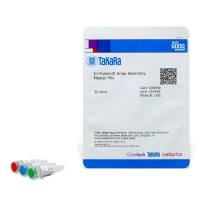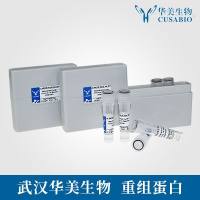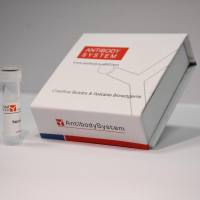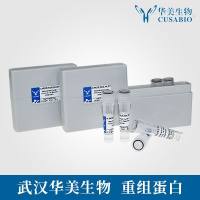Related Journal & Article Information
Manuscript: 2006-01-00990C
Journal: Nature
Article Title: Platensimycin is a selective FabF inhibitor with potent antibiotic properties
Introduction
Numerous in vitro assays have been devised to identify potential drug leads with potent activities. However, most of these lead candidates fail in the preclinical stage due to lack of adequate in vivo efficacy in animal models. One main reason for such high failure rate is poor pharmacokinetics of the candidate in the host. Herein we describe the use of intravenous continuous infusion to circumvent the inherent poor pharmacokinetics of a given candidate to show in vivo ‘proof of concept’ in the early stage of drug discovery(ref. 1). Continuous infusion allows for a putative drug candidate to be maintained at a specified steady-state drug concentration in the host blood and other organs for a prolonged duration, which is not possible by bolus administration. Maintenance of desired steady-state levels of drug gives sufficient time for the drug candidate to confer in vivo efficacy. In an effort to provide greater pharmacokinetic coverage to the lead antimicrobial candidate, platensimycin, we instituted such intravenous continuous infusion with systemic Staphylococcus aureus infection in a murine animal model. This method was successfully used to demonstrate the potent in vivo antibacterial activity of platensimycin against systemic S. aureus) infection.
Materials
Reagents
For this study, 25-30 gram 10 week old CD-1 mice were implanted with jugular vein catheter (JVC) by Taconic Farms. Mouse harness, counter-balance arm and PE 20 tubing were purchased from Instech Solomon. 0.5 inch hollow stainless connector was purchased from Access Technologies. S. aureus MB 2865 (Smith Strain), Trypticase soy broth (TSB), 125 mL baffled flask, and Mannitol agar plates (Becton Dickinson) were used for this study.
Equipment
The main equipment used in the intravenous continuous infusion study is a multi-syringe infusion pump capable of handling multiple 5 mL syringes (Lomir Biomedical) and a 37°C shaking incubator.
Time Taken
This experiment requires total of 3 days, 1 day to set up infusion apparatus cages, 1 day of infusion, and 1 day of incubation for final plating enumeration.
Procedure
1) Virulent S. aureus MB 2865 (Smith strain) was grown overnight with aeration in TSB medium.
2) Bacteria were harvested and washed with fresh TSB and serially diluted to achieve an infective inoculum of 4 × 103 CFU /mL in 5% hog gastric mucin, and 0.5 mL was used to infect intraperitoneally.
3) The infected mice were anesthetized using isoflurane (Abbott). 0.5 inch hollow connectors were attached to the external section of the JVC catheter and the mice were subsequently harnessed to the counter-balance arm inside a mouse cage.
4) Fluid primed PE 20 tubings attached to individual syringes on the infusion pump were connected to the mice through the 0.5 inch hollow connector.
5) The infusion pump was initiated for 24 hours at a flow rate of 0.1 mL/hour.
6) Blood samples are taken by tail vein to determine serum drug concentration during the infusion.
7) After the 24 hour period, the mice were euthanized and the kidneys were aseptically removed and homogenized.
8) Serial dilutions of the homogenates were plated on Mannitol plates and incubated overnight at 37°C.
9) Bacterial counts were enumerated (ref. 2).
Troubleshooting
Tubing may become detached due to radical mouse movement. When it happens, stop the pump temporarily, gently remove harness and reattach the tubing to the 0.5 inch hollow connector making sure no air is in the tubing. Restart the pump and continue observation.
Critical Steps
The compound to be infused must be soluble and filtered through 0.22 µM filter to remove precipitants. The harness must be properly attached to the mouse to restrict access to the exposed tubing; otherwise the mouse will chew the tubing. However, the harness should not be on too tight to restrict breathing, check each individual mouse carefully prior to connecting to the infusion pump.
Anticipated Results
Intravenous continuous infusion of platensimycin was applied at 150, 100, 50 and 25 µg/hr for 24 hours to maintain a variety of steady-state levels in the host plasma. Maintenance of 100 and 150 µg/hr steady state levels resulted in greater than 4-5 log (104 -105 fold) reduction of bacterial load in the kidneys of treated mice compared to the vehicle treated controls (Fig. 1). The corresponding plasma drug concentration of 100, 50, and 25 µg/hr continuous infusion doses were about 0.6, 0.32 and 0.17 µg/mL, respectively (Fig. 2)
References
1. Shoop, W. L. et al. Anthrax lethal factor inhibition. PNAS 102, 7958-7963 (2005).
2. Abruzzo, G. et al. Evaluation of the echinocandin antifungal MK-0991 (L-743,872): efficacies in mouse models of disseminated aspergillosis, candidiasis, and cryptococcosis. Antimicrob. Agents Chemother. 41, 2333-2338 (1997).
Acknowledgements
Keywords
Platensimycin, continuous infusion, in vivo efficacy, Staphylococcus aureus .










